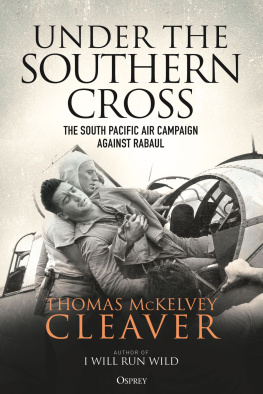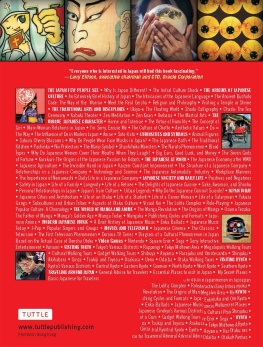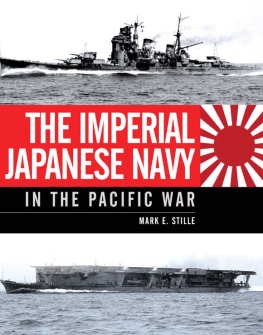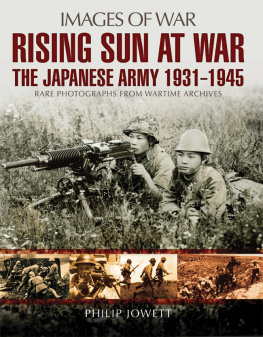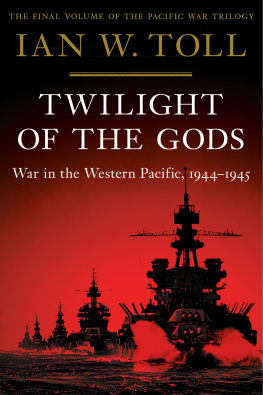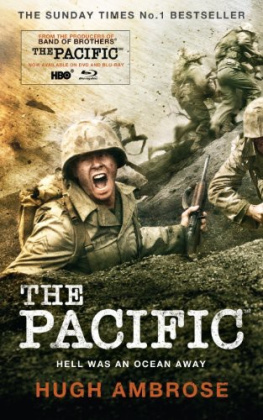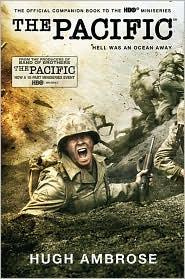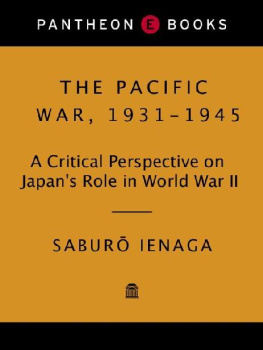Hector C. Bywater - Great Pacific War: A History of the American-Japanese Campaign of 1931-33
Here you can read online Hector C. Bywater - Great Pacific War: A History of the American-Japanese Campaign of 1931-33 full text of the book (entire story) in english for free. Download pdf and epub, get meaning, cover and reviews about this ebook. year: 2016, publisher: Albion Press, genre: Science. Description of the work, (preface) as well as reviews are available. Best literature library LitArk.com created for fans of good reading and offers a wide selection of genres:
Romance novel
Science fiction
Adventure
Detective
Science
History
Home and family
Prose
Art
Politics
Computer
Non-fiction
Religion
Business
Children
Humor
Choose a favorite category and find really read worthwhile books. Enjoy immersion in the world of imagination, feel the emotions of the characters or learn something new for yourself, make an fascinating discovery.

- Book:Great Pacific War: A History of the American-Japanese Campaign of 1931-33
- Author:
- Publisher:Albion Press
- Genre:
- Year:2016
- Rating:3 / 5
- Favourites:Add to favourites
- Your mark:
- 60
- 1
- 2
- 3
- 4
- 5
Great Pacific War: A History of the American-Japanese Campaign of 1931-33: summary, description and annotation
We offer to read an annotation, description, summary or preface (depends on what the author of the book "Great Pacific War: A History of the American-Japanese Campaign of 1931-33" wrote himself). If you haven't found the necessary information about the book — write in the comments, we will try to find it.
Hector C. Bywater: author's other books
Who wrote Great Pacific War: A History of the American-Japanese Campaign of 1931-33? Find out the surname, the name of the author of the book and a list of all author's works by series.
Great Pacific War: A History of the American-Japanese Campaign of 1931-33 — read online for free the complete book (whole text) full work
Below is the text of the book, divided by pages. System saving the place of the last page read, allows you to conveniently read the book "Great Pacific War: A History of the American-Japanese Campaign of 1931-33" online for free, without having to search again every time where you left off. Put a bookmark, and you can go to the page where you finished reading at any time.
Font size:
Interval:
Bookmark:
THE GREAT PACIFIC WAR
Hector C. Bywater
Hector C. Bywater, 1925
Hector C. Bywater has asserted his rights under the Copyright, Design and Patents Act, 1988, to be identified as the author of this work.
First published in 1925 by Constable & Co.
This edition published in 2016 by Endeavour Press Ltd.
I NTRODUCTION
THE late Hector Bywater, for years naval correspondent of the London Daily Telegraph and other well-known British newspapers, possessed a rare complex of qualities. He was not only technically proficient in his mastery of a difficult aft, the business of interpreting sea power to the public; he was not only an able writer, but he possessed that attribute all too rare in students of war vision.
It is that quality, perhaps more than any other, that distinguishes this book Bywater's fictitious but realistic account of a war between Japan and the United States, The Great Pacific War . Bywater wrote it in 1925 when he was a leading figure in what came to be known as The Fleet Street Press Gang, composed of a small group of British naval correspondents who gathered periodically and convivially to exchange their encyclopaedic knowledge of the navies of the world. He could not have foreseen then in a world obsessed with the price of stocks and the length of womens skirts the rise of a Hitler or the War of the World that has now convulsed our civilization. But a small cloud was already beginning to be apparent in the fair skies over the Pacific, and drawing upon his great knowledge of the war potential of Japan and the United States, and utilizing his flair for strategy, Mr. Bywater wrote this pragmatic, and in some ways amazingly prophetic, account of an imaginary conflict in 1931-33.
Those who read this book in its earlier editions and respected Mr. Bywater's interpretations of a fictional conflict as much as I did, could not have been surprised by the formidable blows struck by the Japanese in the first operations of the actual war of 1941. For the author did not make the mistake one made by most people in this country of underestimating the Japanese ability. He knew that the United States was inherently stronger than Japan and that a war vis--vis the two nations could end in only one way; yet he recognized Japanese strengths and American weaknesses; he understood the tremendous significance of distance and geography. He comprehended the single-minded chauvinism that make the Japanese formidable fighting men; in another of his books Mr. Bywater describes the Japanese naval officer as living his profession; study of the naval art of war is the meat and drink and passion indeed, the very meaning of life, to many Japanese officers.
It is this factor that Bywaters book brings home clearly. We must realize, as Bywater did, that we face no push-over in the Pacific, that we cannot dismiss the Japanese contemptuously as too many Americans have been wont to do with the phrase: Why, those yellow bastards
The Japanese are men who are not afraid to die and who are skilled and competent on land, but particularly on the sea and in the air. Like the Germans, they are professionals in the study of war; the democracies, devoted to the development of freedom, are as yet amateurs. The Japanese and the Germans can be met and mastered, therefore, only by men who are as tough in body and spirit as they are, men who must become in the midst of war professionals in the art of war. A vein of steel lies deep in the bedrock of the American character. We are engaged in a struggle for whatever is precious, whatever is fine that life may hold for us, a struggle for life itself. The hard steel of American manhood must be freed of the silt and dross of the years: build our structure of victory upon such bedrock as this and we cannot fail.
Hector Bywater rightly appraised the American character, and as he describes the surprise attacks which opened the fictitious war of 1931 (just as they opened the actual war of 1941), he comments: But the first thrill of horror [in the United States] was succeeded by a stern resolve to see this struggle through to the bitter end. However protracted the war might be, however costly in blood and treasure, it would be waged with the combined might of the whole nation until the sword was struck from the enemys grasp and he was forced to sue for peace.
The invasion of the Philippines, the struggle of our Asiatic Fleet against great odds, the seizure of Guam, submarine and air activities, are all described in this book, not with the sensationalism of the Sunday supplement, but in the sober yet engrossing estimates of the serious student of war.
Bywater wrote as if in retrospect, and he made it clear that in the fictitious war of 1931 the United States did not know until months afterward what really happened at Guam. Today, in this grim struggle for mastery of the Pacific, Bywaters prophecies bear bitter fruit. The cable to Guam (and the Philippines) was cut almost simultaneously with the Japanese surprise attack on Hawaii on December 7, 1941; on December 13, as I write, the Navy Department has just issued this terse communique:
The Navy Department announced that it is unable to communicate with Guam either by cable or by radio.
The capture of the island is probable. A small force of less than 400 naval personnel and 155 Marines were stationed in Guam.
According to the last reports from Guam, the island has been bombed repeatedly and Japanese troops had landed at several points on the island.
Such parallels between Bywaters vision and the gross facts of actual war can already be noted in the first days of conflict, and future events will unquestionably corroborate many of the authors forecasts and deductions. Mr. Bywater would have been the first to disclaim omniscience; he did not completely foresee in the days before Lindberghs flight to Paris the terrific power of the air arm, nor did he predict the treacherous Japanese attack upon Pearl Harbor. But his book The Great Pacific War was, in the light of present events, deeply prophetic, and in many ways will continue to be so in the light of events to come. We may read these words from the closing chapter, confident in their integrity:
China, the country for whose control Japan had risked so much, was now a completely independent power Sakhalin had been surrendered in its entirety to Russia
the shortage of commodities [in Japan] had now become more marked the historian may be permitted to marvel at the folly of Japan in wantonly attacking a country with whom she had no real cause for enmity, and whose friendship was, indeed, essential to her own welfare. As a result of this unprovoked conflict, Japan was brought to the verge of ruin, nor is it conceivable that she will regain her former status as a first-rank Power during the present generation.
Hanson W. Baldwin, NEW YORK, December , 1941
CHAPTER I
Causes that led to the War Japans endeavours to control China China takes a step towards unification Friction over an American concession Situation complicated by a Communist agitation in Japan Japanese Government decides on war with the United States as a solution for domestic difficulties
A PISTOL shot fired at Sarajevo in June, 1914, touched off the European powder magazine, causing an explosion that convulsed the earth. It might be said with equal truth that a bomb bursting in Tokyo on January 5, 1931, gave the signal for the recent tremendous conflict between the United States and Japan, the echoes of which have scarcely died away. Thanks to the documentary evidence now available, it is possible to trace, link by link, the connection between this attempt on the life of Prince Kawamura, the Japanese Prime Minister, and the subsequent events which culminated in the Pacific War; but to do so we must first briefly review what had been happening in Japan and elsewhere in the Far East during the preceding ten years.
Next pageFont size:
Interval:
Bookmark:
Similar books «Great Pacific War: A History of the American-Japanese Campaign of 1931-33»
Look at similar books to Great Pacific War: A History of the American-Japanese Campaign of 1931-33. We have selected literature similar in name and meaning in the hope of providing readers with more options to find new, interesting, not yet read works.
Discussion, reviews of the book Great Pacific War: A History of the American-Japanese Campaign of 1931-33 and just readers' own opinions. Leave your comments, write what you think about the work, its meaning or the main characters. Specify what exactly you liked and what you didn't like, and why you think so.

